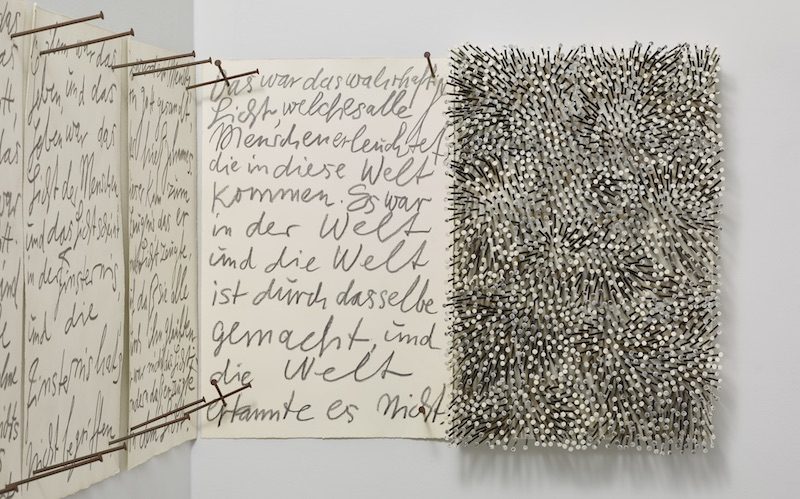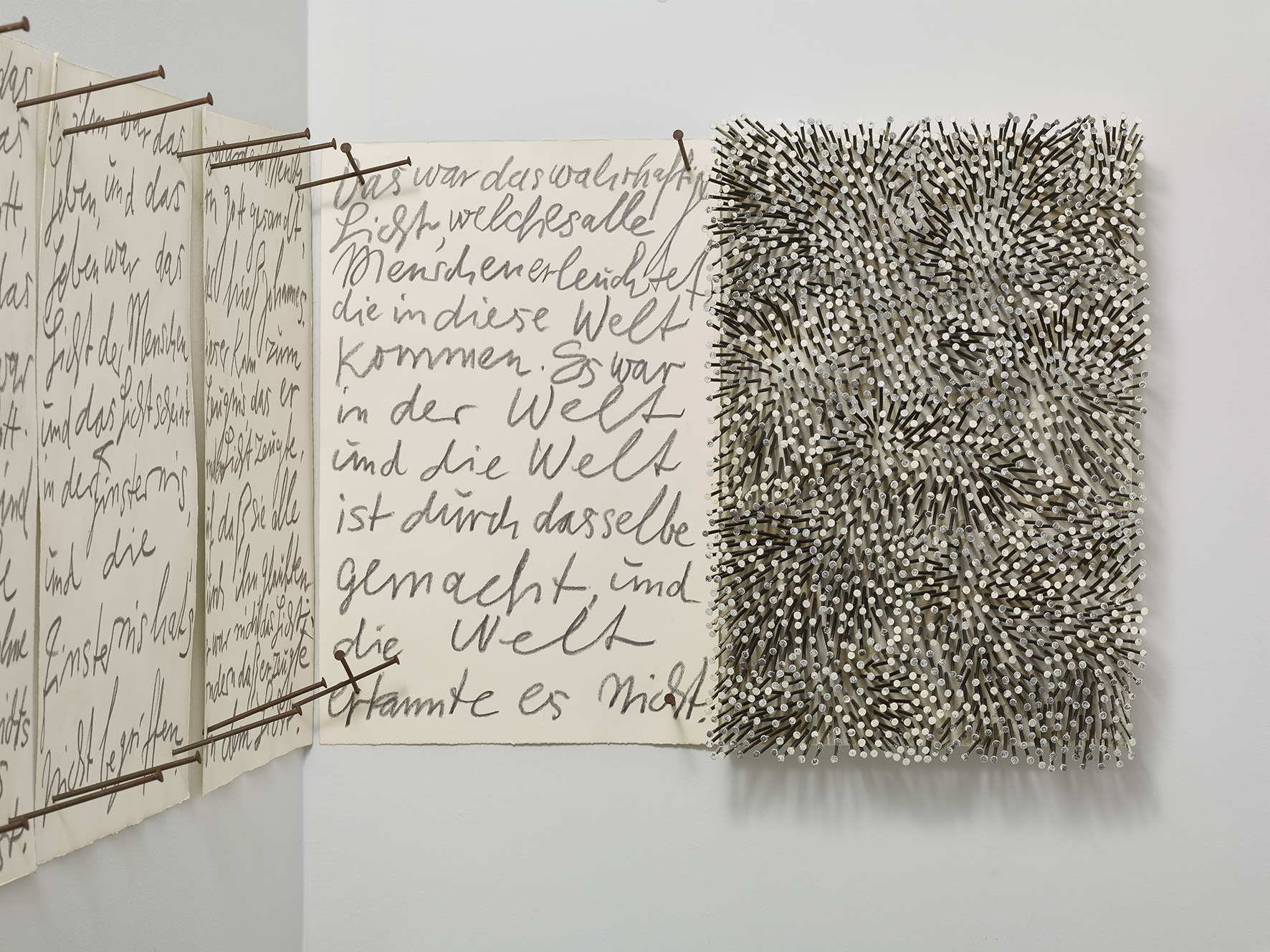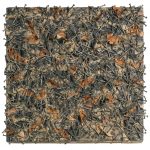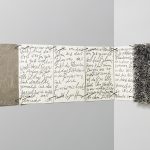
The works Günther Uecker has been creating for more than 60 years maintain a form that hovers between powerful expression, political statement and delicate gesture. With his extensive oeuvre, Uecker is among the most multifaceted representatives of German post-war art.
During Dorotheum’s Contemporary Auction Week (Nov. 27 – 30) three outstanding works by Günther Uecker will be for sale at the Contemporary Art auction on November 27, 2018. Among them is Feld (€ 400,000 – 600,000), which was created in 2012/13, and the partially painted square Poetry of the Destruction (€ 160,000 – 240,000). In the six-part work Johannes from 1995, which can be assigned to his ash pictures, the artist refers to the catastrophe of Chernobyl. Handwritten quotes from the Gospel of John are written among the ash and a nails (€ 200,000 – 300,000).
Günther Uecker co-founded the art movement ZERO in Düsseldorf in 1958 along with Heinz Mack and Otto Piene. The “envisioned tendency was the cleansing of colour from traces of the Informel and Neo-Expressionism; the peaceful conquest of the soul through sensitisation. […] ZERO is an immeasurable zone in which a former state transitions into an unknown new one”, Otto Piene said of ZERO’s formation.
Uecker’s 1995 work Johannes (John), which is coming up for auction at Dorotheum, is among his bibliophile works – a group of more than 200 individual pieces including numerous portfolio works, books, large object installations and multiples dealing with language, political, religious and fictional texts, which either form the work or are firmly integrated into it.
In Johannes, two pictures – one made of ash and another of nails – are placed to the left and right of verses 1 to 9 from the first chapter of the Gospel of John. The text is an integral part of the overall piece and is elevated to the status of art along with the flanking works. “Something like an internalisation in the sense of a prayer happens when you copy the words in writing. And when I turn my attention to these words, then artistic action and legible writing become a very important process for approaching the originality and ethical expression of the Scripture. It has to devolve upon me, otherwise I would just be copying it like a scribe without understanding what it is that I’m writing”, Uecker said. Thus the words are connected to the artwork and to be understood as a complementary comment on the accompanying artistic works.

Günther Uecker makes a political statement with his ash pictures, most of which were made in the aftermath of the Chernobyl nuclear accident in 1986. He criticises the destruction of the environment and man by human beings. At the same time, he sees ashes not only as a legacy of destruction, but also as a symbol of a new start that embodies destruction and healing, so to speak, but also the end and the beginning. Uecker creates a direct relationship between the beginning of the Gospel of John (“In the beginning was the Word …”) and the ash picture that symbolises the beginning in Johannes.
The visually impressive Nail Fields Uecker has been creating since the mid-1960s have their roots in the artist’s positive experiences. He uses them to process memories of his childhood on the Baltic Sea, where he tilled the fields with great pleasure and meticulousness. And so the nails, hammered into the surface in a loose rhythm, have the look of a cornfield swaying in the wind. The impression is further enhanced by the shimmering surface – an effect of the nails painted white only on the heads.
Uecker’s nail marks a point between the polar principles of light and shade, which represent permanent healing, recreation and purity on the one hand, and destruction, death and darkness on the other. The nail picture as the final element in Uecker’s bibliophilic work Johannes references the words in verse 9, chapter 1 of the Gospel According to John. The artist captures light and shadow as moving fields in terms of ever variable shadows of nails on the wall and sheets. The artistic action of attaching text sheets to the wall by means of long nails thus conveys a message through language, which forms a part of the overall context of Uecker’s work. The ash and nails become ciphered carriers of information, forming a bibliophilic, complete work of art together with the text elevated to the status of art.
These three artworks by Günther Uecker and many more exceptional pieces will be for sale in the Contemporary Art auction on November 27, 2018.
Click HERE for the full catalog.















